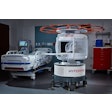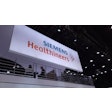
Concerns over possible gadolinium retention in the brain have prompted more than half of surveyed pediatric radiology departments in the U.S. to switch from a linear gadolinium-based contrast agent (GBCA) to a macrocyclic GBCA within the past year, according to a study published online March 10 in Pediatric Radiology.
The numbers represent a dramatic shift away from linear gadolinium contrast over the past six years. In a 2011 study by Trout et al, 81% of pediatric departments used linear ionic GBCAs. Today, 80% of pediatric departments have switched to macrocyclic gadolinium (Pediatr Radiol, March 10, 2017).
"One of the surprises of the study was how many pediatric hospitals are switching -- and are considering switching -- just within the past year," said co-author Dr. Michael Rozenfeld, a pediatric neuroradiologist at Banner Cardon Children's Hospital in Mesa, AZ. "My thought is, as long as you can choose the most stable agent, why would you not? It is better to err on the side of caution, and there is certainly no detriment to using a more stable agent."
Gadolinium deposition
Since the 2013 study by Kanda et al, which found higher signal intensity in the brains of patients who received gadolinium contrast several years after administration, myriad researchers have delved deeper into the properties and possible aftereffects of both macrocyclic and linear gadolinium agents. While both GBCAs result in traces of gadolinium in the brain, macrocyclic GBCAs are considered stabler and apparently result in less retention than linear GBCAs.
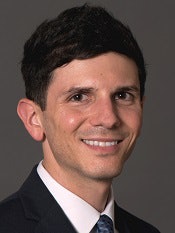 Dr. Michael Rozenfeld from Banner Cardon Children's Hospital.
Dr. Michael Rozenfeld from Banner Cardon Children's Hospital.Earlier this month, Radbruch et al reported on evidence that the use of a macrocyclic GBCA does not increase signal intensity in the dentate nucleus among pediatric patients. The results mirrored findings from a previous study in which the same researchers detected no evidence of increased T1 signal intensity among adult patients who received more than 20 injections of macrocyclic GBCAs for their MRI scans.
The cumulative outcome of these studies and patient-centered efforts, such as the Lighthouse Project, which reports on GBCA research and firsthand accounts of patients with ailments they attribute to gadolinium retention, has been more awareness and questions from patients of all ages facing contrast-enhanced MRI scans.
"Through the grapevine, I had heard of pediatric institutions that were switching to macrocyclic agents or nonionic [gadolinium-based contrast] agents," said Rozenfeld, who also serves as a faculty physician in the department of radiology at the University of Arizona College of Medicine-Phoenix. "At the same time, a few parents of pediatric patients were calling our department, asking to speak to us about receiving contrast and wanting to know if it is safe to be given contrast."
Changing allegiances
Those inquiries and lack of previous data on GBCA usage within pediatric departments prompted Rozenfeld and colleagues to email 5,390 surveys between January and March 2016 to members of a variety of groups:
- Society of Chairs of Radiology in Children's Hospitals (SCORCH)
- Society for Pediatric Radiology
- Referring pediatric providers, including members of the Pediatric Endocrine Society, a group of pediatric neuro-oncology attending physicians, pediatric neurology attending physicians, and pediatric infectious disease program directors
The researchers received 690 replies (13%), and they analyzed the responses by physician specialty and group.
Among the completed surveys received from the 26 SCORCH members, 15 pediatric departments (58%) switched to a macrocyclic GBCA within the past year. Eight departments (53%) changed to gadoterate meglumine (Dotarem, Guerbet), while seven departments (47%) went with gadobutrol (Gadavist, Bayer HealthCare).
| Changes in GBCA use | |
| Reason for GBCA change | No. of pediatric departments |
| Concern about brain gadolinium deposition | 11 (73%) |
| Improved safety profile | 7 (47%) |
| Improved stability | 5 (33%) |
| Concern about nephrogenic systemic fibrosis | 3 (20%) |
| Cost | 1 (7%) |
Banner Cardon Children's Hospital switched from gadobenate dimeglumine (MultiHance, Bracco Diagnostics) to gadoterate meglumine due to concerns over brain gadolinium retention, Rozenfeld noted.
A further analysis of usage found 11 departments (42%) using gadobutrol, 10 (38%) administering gadoterate meglumine, and one (4%) opting for gadoteridol (ProHance, Bracco).
"I was surprised at how quickly many of these large hospitals were switching. Many of these decisions are made at a large hospital where it is hard to switch contrast agents," Rozenfeld said. "There are large purchase orders, large administrative staffs, and a lot of hoops you have to jump through to change."
Also of note, none of the 26 pediatric radiology departments surveyed used linear nonionic agents. For neuroimaging, four departments (15%) still used the linear ionic agent gadopentetate dimeglumine (Magnevist, Bayer) and five departments (19%) used gadobenate dimeglumine.
Two linear ionic GBCAs remain in use in 12 pediatric departments (46%). Both gadofosveset trisodium (Ablavar, Lantheus Medical Imaging) and gadoxetate disodium (Eovist, Bayer) have very specific indications.
"These two linear agents are sort of in their own category," Rozenfeld said. "Eovist is used specifically for liver imaging and Ablavar is used for vascular imaging. Our institution uses [Ablavar] specifically for cardiac imaging. For those two agents, there is no alternative, and they also have fairly limited use."
Awareness disparities
Among the other groups surveyed, the researchers found a significant difference in familiarity with brain gadolinium deposition research across pediatric specialties, despite the plethora of published studies on macrocyclic and linear GBCAs over the past several years.
Interestingly, 170 (87%) of 196 pediatric radiologists were familiar with brain gadolinium deposition research, compared with only 121 (26%) of 468 referring pediatric providers and only 78 pediatric providers (17%) who knew which GBCA their radiology department used.
"The key point is that the [gadolinium retention issue] requires more research, and we need to increase our knowledge about gadolinium contrast agents in general and their potential effects," Rozenfeld said. "We need to educate both radiologists and referring physicians about the topics, so we can make appropriate decisions about our patients."
In addition, radiologists (48%) were significantly more likely to feel comfortable and knowledgeable discussing brain gadolinium deposition with their patients, compared with the comfort level among referring physicians (6%). Conversely, 43% of radiologists expressed their discomfort or did not feel knowledgeable enough to discuss brain gadolinium deposition with their referring pediatric providers.
"That is a concern because, if a patient is going to call, the one person who should be comfortable discussing it is the radiologist in the hospital," Rozenfeld said. "At our hospital, we sent out an email to the staff about our switch and why, but apparently a lot of hospitals have not done that."

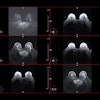
.fFmgij6Hin.png?auto=compress%2Cformat&fit=crop&h=100&q=70&w=100)



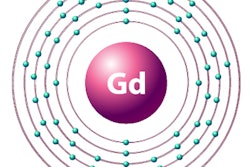
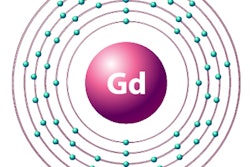
.fFmgij6Hin.png?auto=compress%2Cformat&fit=crop&h=167&q=70&w=250)







